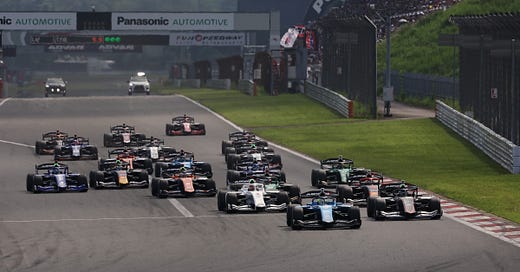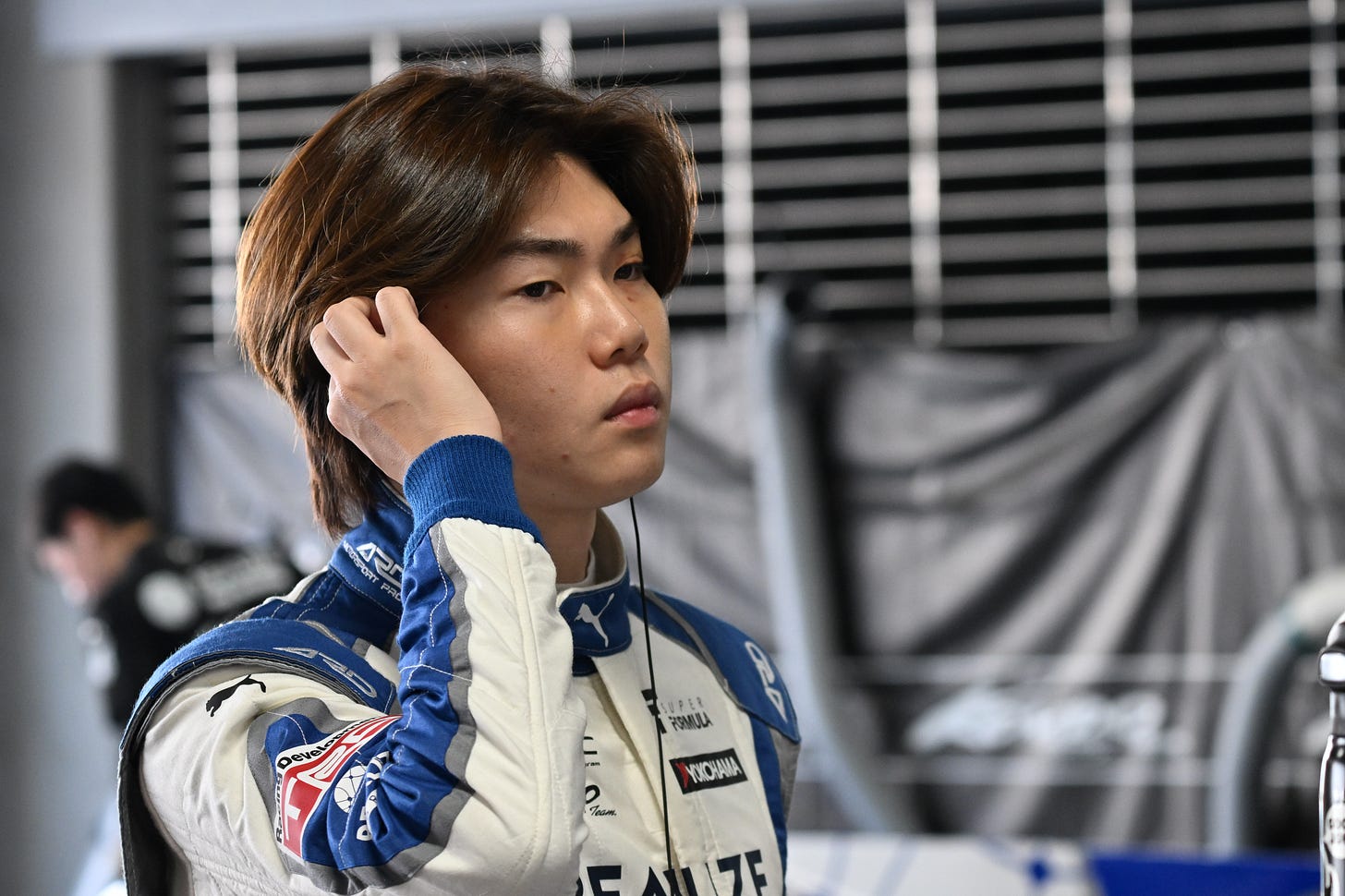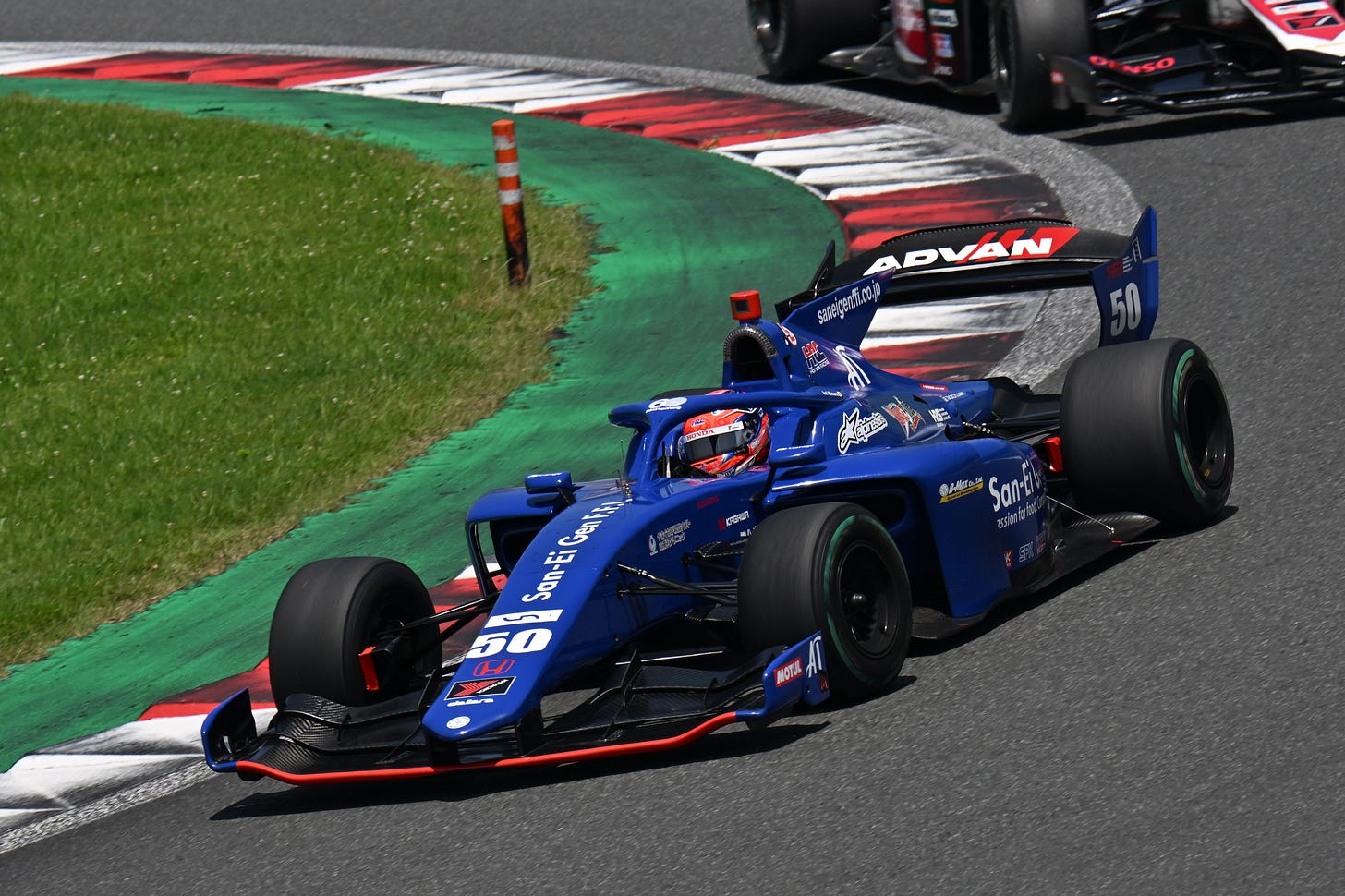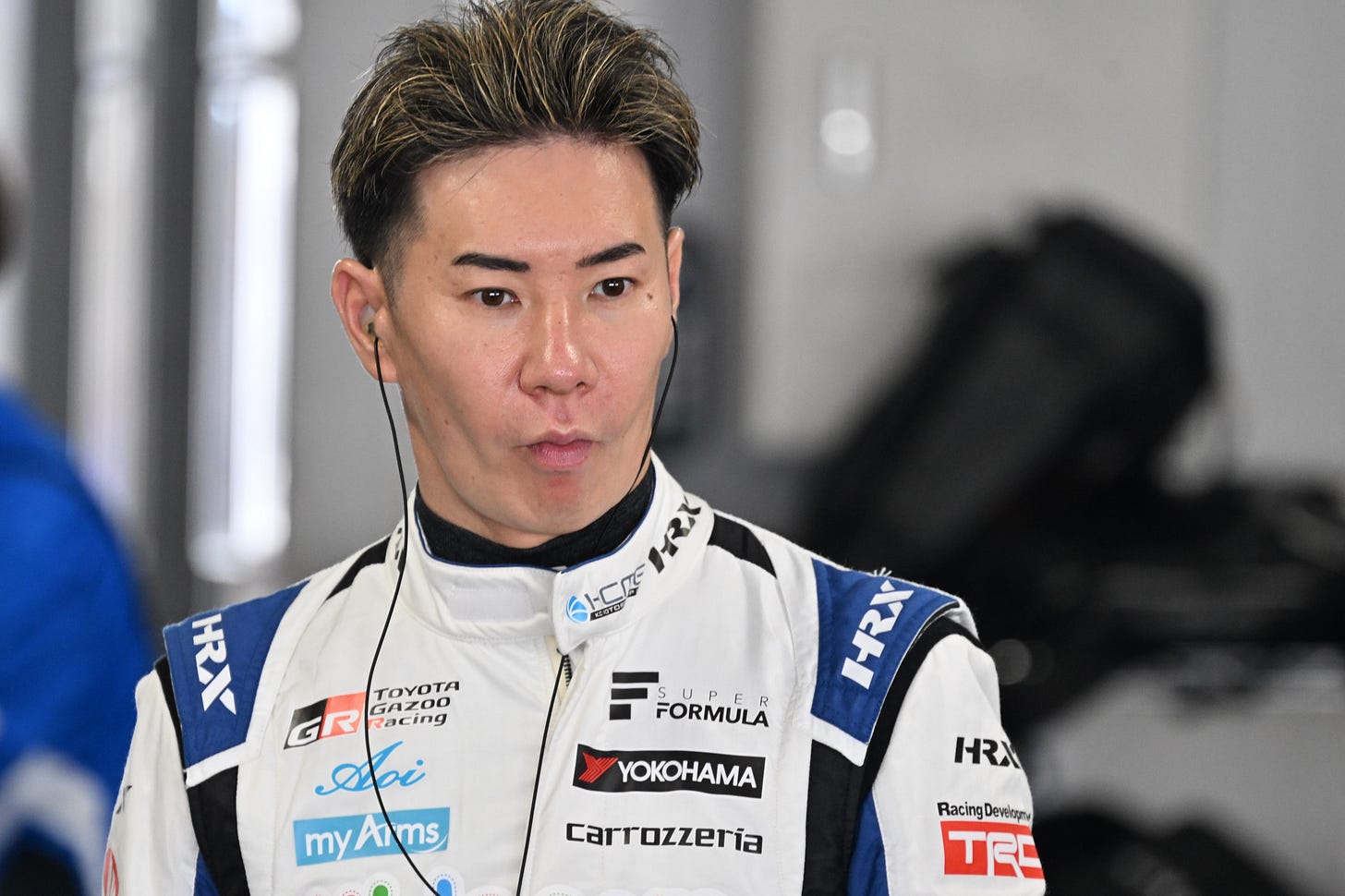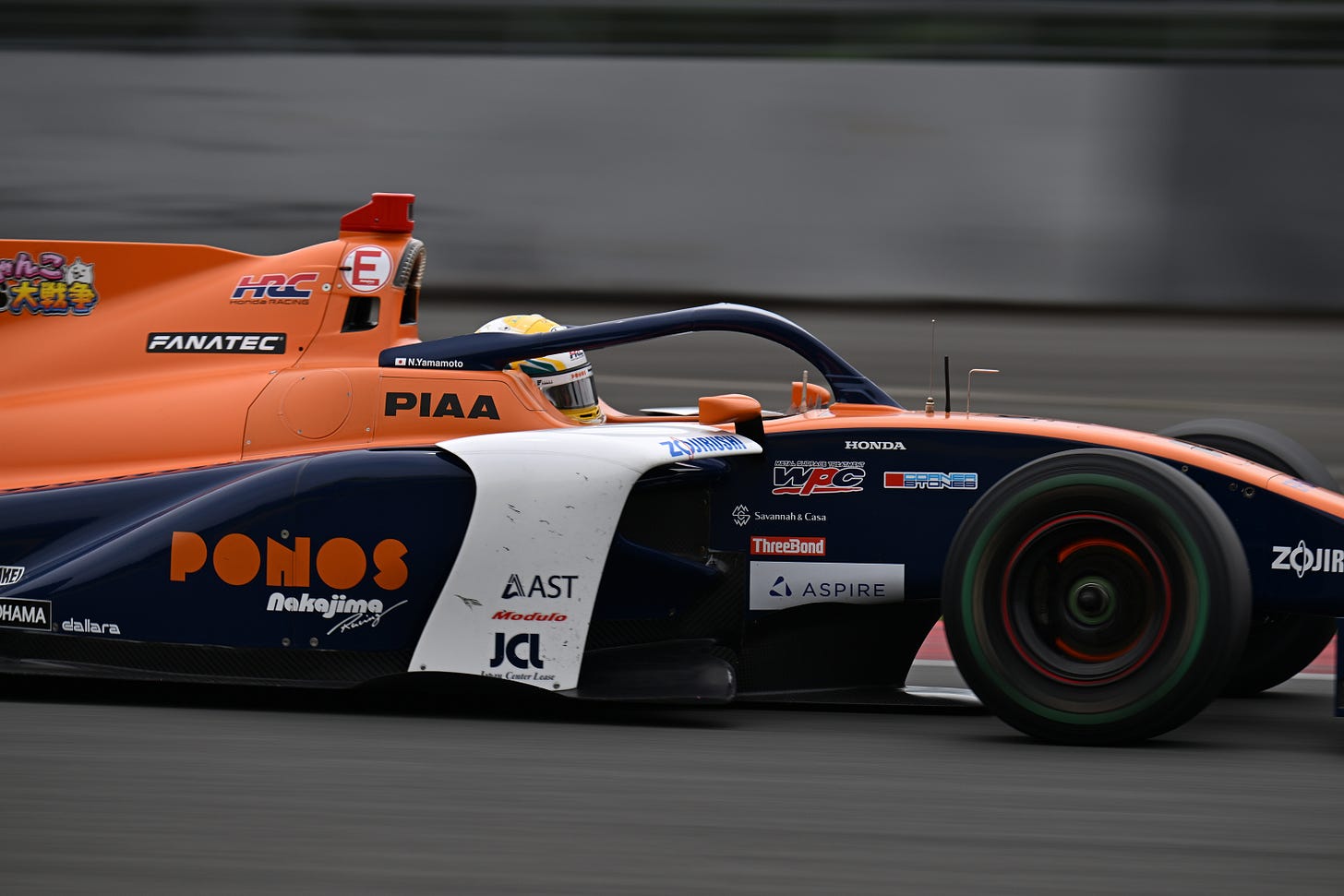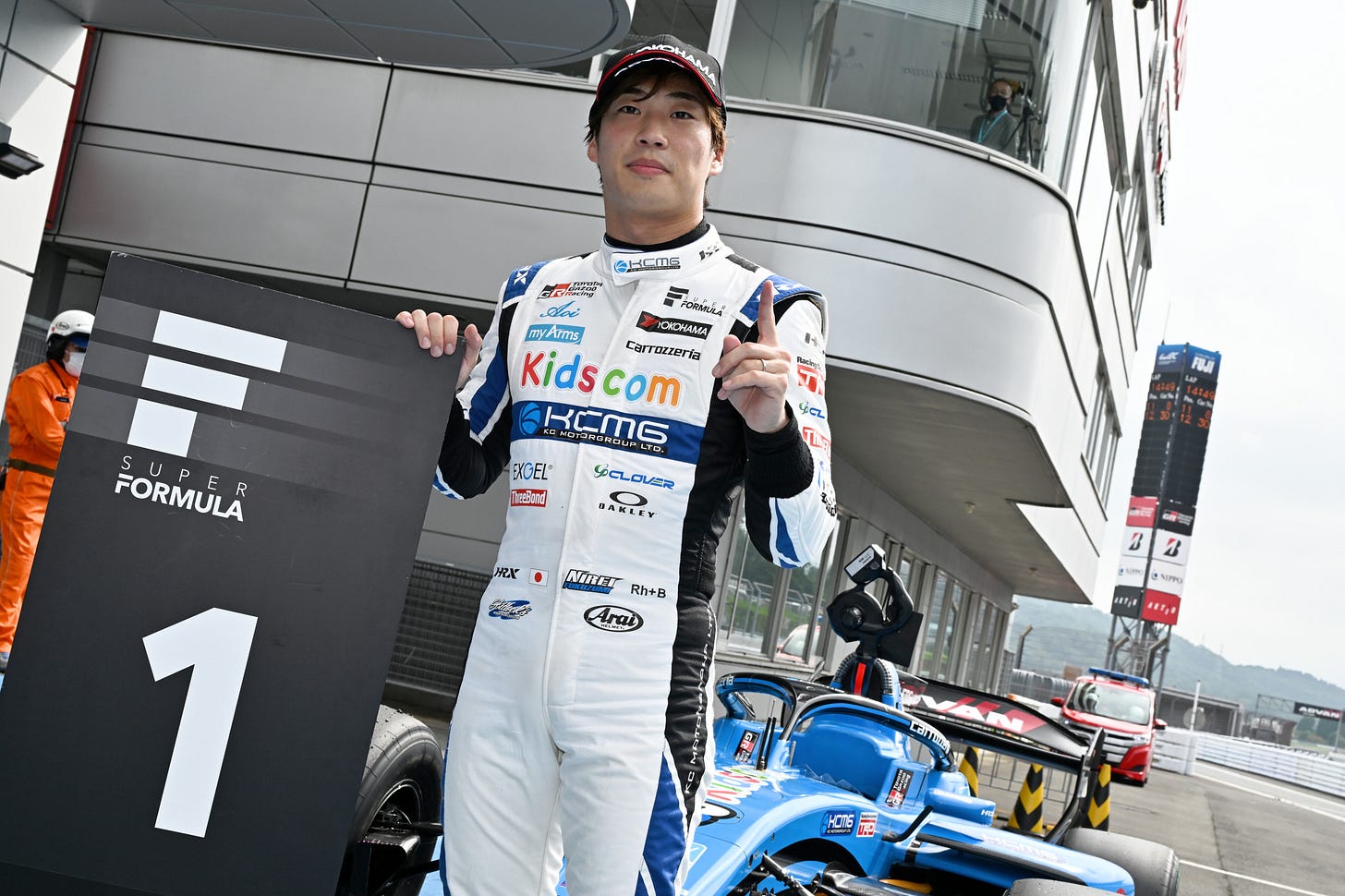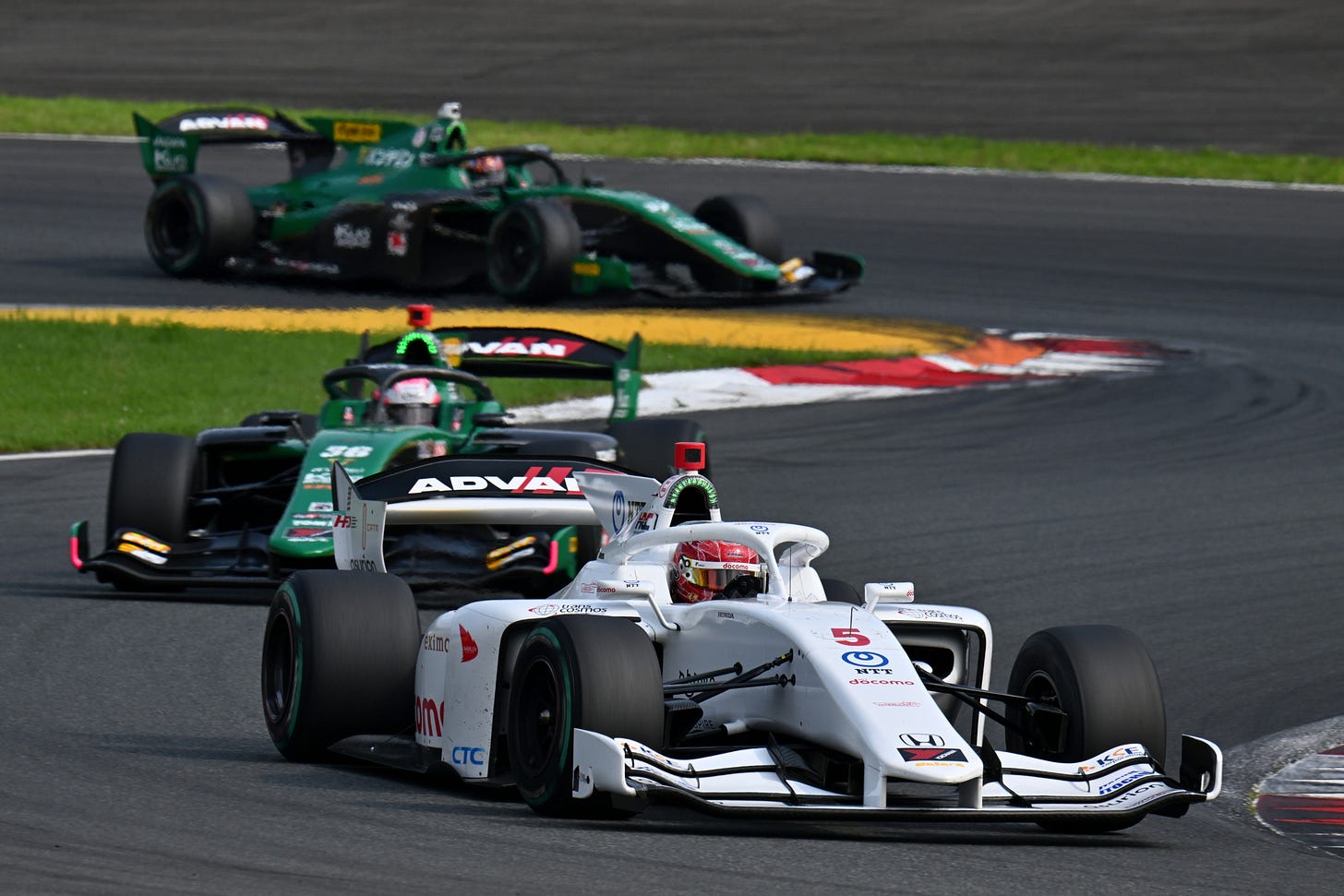Every Super Formula driver ranked at the midpoint of the season
An attempt to rate every full-time Super Formula racer after four of this year's seven race weekends... (All Photos: JRP)
With four races down and five to go (spread across three meetings), it feels like a good time as any to look back on the season so far and assess how each full-time driver in the Super Formula field has done over the first half of the season.
This list does not include drivers who have not contested all four races so far - so no Nobuharu Matsushita, Hiroki Otsu, Theo Pourchaire, Ben Barnicoat or Hibiki Taira.
So, without further ado, let the countdown begin…
Juju Noda (TGM Grand Prix)
No prizes for guessing who ends up at the bottom of the list! While Juju may be much closer to the pace now than she was back at Suzuka in March, the fact remains she is still far away from being able to beat, or even seriously challenge, any of the other drivers on the grid on merit, either in qualifying or over a race distance.
From being around 105% off the pace in qualifying at Suzuka, Juju has chipped away at the deficit, having been 102.4% away from the top time in Q1 last time out at Fuji. But in race trim, she just wasn’t consistent enough to do anything other than circulate alone at the back, at least after losing the places she gained with a good start.
The Fuji race was the first following a surprise mid-season swap of TGM engineers, something that appears to have been done at the behest of the Noda camp. We can only hope that’s not an early sign of a loss of patience with Juju’s continued - but hardly surprising - inability to push further up the competitive order.
Kazuto Kotaka (Kondo Racing)
Now in his second year at Kondo, Kotaka has proven capable of showing the occasional turn of speed, but remains frustratingly inconsistent. His one points finish so far came with eighth place in an anomalous wet Sugo race, but apart from that, his best finish has been a lowly 17th. In addition, he has lagged far behind lead Kondo driver Kenta Yamashita, having been outqualified by his teammate every weekend.
Last season, Kotaka was 15th in the standings with a best finish of sixth. Then, he had the excuse of being in his first full season. That no longer applies, and the reality is he needs to be doing a lot more to be sure of keeping his place in the Toyota stable.
Ukyo Sasahara (TOM’S)
Like Kotaka, Sasahara has proven no match for his teammate so far in 2024. Unlike the Kondo driver, he is worryingly yet to score points in four attempts, but Sasahara gets the higher ranking of the two here by virtue of his greater level of consistency in race trim, having banked 12th-place finishes at both Autopolis and Fuji.
That’s still nothing to shout about for a driver who was twice a race winner at Team Mugen in 2022, and is coming under ever-increasing pressure to justify the decision by TOM’S to hand him the keys to what was Giuliano Alesi’s car last year. The talent is clearly there, but as Sasahara knows only too well, that’s only one factor of many that are needed to be able to get results in Super Formula.
Atsushi Miyake (ThreeBond Racing)
Ranking drivers in one-car teams is difficult, but the evidence so far is that Miyake is doing a tidy job for a team that is still struggling to find its feet in its fifth season, all the more so given the change in maintenance garage from Drago Corse to Kingelt.
He may have no particularly eye-catching results to his name, with a best finish of 14th to his name at Suzuka, but Miyake has regularly finished ahead of cars that a ThreeBond driver has no right to, and has made no real mistakes of note. When you factor in that Miyake is also returning to full-time action after a year on the sidelines, he’s doing about as much as you could realistically expect of him.
Iori Kimura (B-Max Racing)
It would be fair to say that Honda protege Kimura is having a solid, if not spectacular, rookie campaign so far. After a couple of decent races at Suzuka and Autopolis to kick off the year, he scored his first points in the wet at Sugo, always an important milestone to reach for a newcomer, even if the circumstances were unusual.
It was arguably disappointing not to see the Russian-Japanese driver push on a bit more at Fuji, but it’s also important to remember that Nobuharu Matsushita went nearly the whole year without scoring points in the same car last year. When you factor in Kimura’s inexperience, and the fact he has no references in the one-car B-Max stable, then it’s hard to find too much fault with his performances.
Kazuya Oshima (Rookie Racing)
There may be no points on the board yet, but the signs are that Rookie Racing is steadily making progress as it strengthens its engineering system, and that a previously demotivated Oshima is also raising his game to meet the challenge.
Coming within one thousandth of a second of Ayumu Iwasa at Q1 at Sugo was a reminder that Oshima is still capable of going toe-to-toe with the best of them on his day, and the crash that he suffered in the rain is one that could have befallen anybody. A damaged floor prevented Oshima from fighting for points at Fuji, but a smooth weekend at Motegi should put him in the frame for a top 10 on current form.
Yuji Kunimoto (Team Impul)
After four tough seasons at KCMG, it would be fair to say that 2016 Super Formula champion Kunimoto needed a change of environment, and he appears to be relishing his move to a team that was still one of the grandees when he made his Super Formula debut back in 2011. It’s a shame therefore that the 33-year-old’s arrival at Impul has coincided with the team’s descent into the lower part of the midfield.
The first two rounds were fairly uninspiring, but Kunimoto showed well at Sugo, cracking Q2 for the first time, and then made up 10 places from his grid slot to come home a creditable sixth last time out at Fuji. But, if Impul can’t up its qualifying game, it’s going to be tough to replicate such performances for the rest of the year.
Kamui Kobayashi (KCMG)
The most frustrating thing about Kobayashi’s season so far is that while KCMG appears to be making progress as a whole, the Toyota WEC star’s results have been much the same in 2024 as they have been for the past two years: disappointing.
Admittedly, he damaged his front wing in an early scrap with Kenta Yamashita at Fuji and lost time with a slow stop (albeit not as much as Nirei Fukuzumi), so perhaps a top-six could have been in the offing. But not more than that. And with Fukuzumi showing winning potential, the onus is now on Kobayashi to up his game in response if he wants to reap the fruits of the team stepping it up to take on the big guns.
Ren Sato (Nakajima Racing)
Honda-backed youngster remains one of Super Formula’s biggest enigmas. Now in his third season and his second with Nakajima Racing, the 22-year-old hasn’t quite built on a quietly assured sophomore campaign, in which he frequently had the measure of his more illustrious teammate Naoki Yamamoto, as some observers had hoped.
Arguably unlucky to miss out on a podium at Suzuka due to strategy, Sato has simply not been qualifying well enough to be a true part of the conversation at the head of the field since then, even if he did execute a solid recovery drive to seventh at Fuji. One Q2 appearance and an average grid slot of 11.5 is not good enough for a driver of Sato’s obvious potential. He and the team need to turn things around at Motegi.
Toshiki Oyu (Inging)
Before Fuji, Oyu was set to feature much lower down this list, but a strong run to second and a first real whiff of a victory since the early stages of his doomed 2023 season with TGM Grand Prix have served to catapult him up the order.
Wretched weekends at Suzuka and Autopolis mean the Hokkaido native can’t feature any higher up this list, but now the #39 Inging crew seems to have largely gotten its act together (with some help from Shintaro Okajima on the other side of the garage), Oyu does appear to be on a sustainable upwards trajectory. It’s too late to rescue his title bid, but more podiums and maybe that elusive second career win look realistic.
Naoki Yamamoto (Nakajima Racing)
There have been fewer more heart-warming sights in Japanese motorsport recently than seeing Yamamoto back to something close to his brilliant best following his horror SUPER GT crash at Sugo last year. With the 36-year-old having come close to calling time on his career but finally opting for surgery in a bid to make a comeback, a first dry-weather podium for Nakajima Racing felt like a just reward for his tenacity.
All of that said, Yamamoto season has been trending in the wrong direction, with the form that took him to the podium at Suzuka and to the brink of another top-three at Autopolis having seemingly evaporated in the mid-summer heat. While he can take a degree of comfort from getting back on top of upstart teammate Sato, surely nothing less than fighting for wins again will provide him with any real satisfaction.
Sena Sakaguchi (Inging)
The highlight of Sakaguchi’s season came in the very first day of official on-track action of the season at Suzuka, as he scored a first pole of his career and the first for any Toyota engine user in nearly a year. Since then, there hasn’t been too much to write home about, although he had the clear measure of new teammate Oyu for the first two rounds. Electrical issues meant we didn’t get to see how he would have fared against Oyu at Fuji, so we have to give Sakaguchi the benefit of the doubt there.
It feels like Sakaguchi’s season is now at something of a crossroads, with the mantle of Inging team leader now very much up for grabs again after Fuji. It’s up to him to seize it and not allow the prize to slip away amid Oyu’s recent turn of speed.
Kenta Yamashita (Kondo Racing)
Frustratingly for both him and the team, Yamashita’s 2024 season appears to be on a similar trajectory to last year: a promising early result that proves to be something of a false dawn, followed by some middling points finishes and then an absolutely disastrous weekend at Fuji. The only real difference is that Yamashita arguably had the pace to win at Suzuka, but finally he had to be content with second.
Now in his eighth season at Kondo Racing, you have to wonder whether a change of environment might be beneficial for Yamashita. Inheriting his former teammate Sacha Fenestraz’s old chassis and engineering setup clearly provided a boost last year, but it appears the Toyota ‘tensai’ has hit a fresh ceiling which will be tougher to break.
Nirei Fukuzumi (KCMG)
Fukuzumi’s 2021 campaign with Dandelion Racing, in which he was Tomoki Nojiri’s closest rival for the title, somehow feels like it was longer ago than it really was. But those that remember it won’t have been surprised how quickly Fukuzumi has adapted to life as a Toyota driver after two seasons in the doldrums at ThreeBond.
Even before Fuji, where Fukuzumi deserved to win without the disastrous KCMG pit stop that relegated him to fourth, there were encouraging signs. And at the halfway point of the season, he leads Kobayashi 3-1 in the qualifying stakes and has finished ahead in every race bar the anomalous wet contest at Sugo. If KCMG can keep up its improved form, Fukuzumi should be well-placed to capitalise.
Kakunoshin Ohta (Dandelion Racing)
He may only be ninth in the championship, but Ohta’s season has been better than it has appeared on paper. His best result so far has only been fourth, which came in the opening round at Suzuka, but that was a race he could have realistically won without making a poor start. Autopolis was solid enough, he did well to keep it out of the wall at Sugo in the wet, and electrical trouble ended his race prematurely at Fuji.
The reality is that there has been relatively little to choose between the Dandelion teammates most of the time, even if Tadasuke Makino has the headline-grabbing result (a win at Autopolis) that Ohta lacks. You could even argue that reflects well on Ohta, whose consistency belies the fact that he is still only in his second season.
Ayumu Iwasa (Team Mugen)
Even from the start of the year, Iwasa’s ambitions of using Super Formula as a springboard to F1 stardom, as his predecessor Liam Lawson had done, always felt a touch unrealistic. After all, Lawson is still waiting for his chance at the time of writing, and Iwasa just hasn’t made the same impact in Japan as the Kiwi did last year.
That’s not to say the Red Bull junior has been underwhelming: far from it. His pole at Autopolis was extremely impressive for the sheer margin he had over the field, and that was a race he really should have won. But there, as was the case at Suzuka and then even more so Fuji, an inability to get off the line cleanly has cost him dearly. The good news is that this is something that should, together with this Mugen crew, be possible to fix. The question is whether his title challenge can still be rescued.
Tadasuke Makino (Dandelion Racing)
Makino went into the 2024 season having seen Ohta become the latest in a long line of teammates to beat him to a first win. But after an underwhelming start to the year at Suzuka, Makino put that right in emphatic fashion at Autopolis, beating Iwasa in a straight fight to propel himself into championship contention.
That said, doubts have to remain whether Makino can really go all the way after the events of Fuji, where he only managed fifth. Perhaps it’s a mark of how far he and Dandelion have come that such a result now has to be viewed as a disappointment. But Makino still has further to go if he wants to be regarded as part of the elite.
Tomoki Nojiri (Team Mugen)
It was an extremely close call for the top spot on this list, and in the end Nojiri narrowly misses out. Maybe the two-time champion is a victim of high expectations, but of the three ‘proper’ races to have taken place so far (excluding Sugo), the scorecard reads 1st, 9th, 3rd. And it’s that middle result at Autopolis, where Nojiri was completely destroyed by Mugen teammate Iwasa, that harms his case.
For all his strengths, Nojiri is very much a driver who needs to feel comfortable in the car, and it appears the move to common dampers has deprived him of some of that comfort, even if the car’s ultimate potential is pretty much unchanged. But turning around an unpromising Fuji weekend to clinch a podium shows that he certainly won’t be going down without a fight in his bid for a third title in four seasons.
Sho Tsuboi (TOM’S)
By replacing Formula 2-bound Ritomo Miyata, Tsuboi had big shoes to fill at TOM’S. But four races into the season, he has proven Toyota made the right decision to place him in what is now the #36 car. Excluding Suzuka, where both TOM’S cars struggled with a mysterious lack of straight line pace, Tsuboi has never been off the podium, and his explosive pace last time out at Fuji was a true marvel to behold.
Overcoming Nojiri to deliver TOM’S back-to-back drivers’ titles will be tough, but certainly not impossible if Tsuboi continues to deliver at such a high level. Motegi has traditionally been a Mugen stronghold in recent years, but another double-header at Fuji should give Tsuboi the chance to make up his points deficit. If he heads to Suzuka roughly level, he can be confident that he can walk away as champion.

